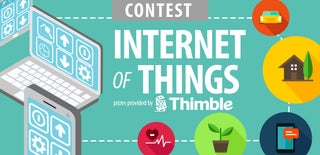Introduction: Inexpensive Touchscreen "Life Command Center" Using Pine64
After deciding to back the Pine64 (similar to the Raspberry Pi) on Kickstarter I needed to figure out a cool project to use it with. After getting the Pine64 working with Android and finding a relatively cheap touchscreen LCD on eBay I had the idea to build a "command center" for my life and place it in my kitchen to replace my existing family calendar and cork board.
The general idea was to have a large touchscreen monitor that used Android widgets to provide some of the following functions:
- Shared Calendar (view and add)
- IP Camera viewer
- Stock Ticker
- Weather (w/ radar)
- News
- Sports Scores
Overall the whole project worked out great and cost me around 150 (most of it was the touch screen). I'd love to hear ideas on how to make it even better, more comments the better.
What makes the Pine64 unique for this project is that currently Raspberry Pis cannot run the full Android OS. The Pine64 2gb runs it pretty well!
Step 1: Pine64 Setup
The Pine64 is a relatively inexpensive and powerful System on a Chip. For this project I used the $29 2b version, https://shop.pine64.com/products/pine-a64-board-2gb . The 2gb version might be overkill for this project but it's what I had handy.
Since I needed Internet connectivity I also used the Wifi module which just attached to the top of the board - https://shop.pine64.com/collections/modules/products/wifi-bluetooth-4-0-module?variant=9234028803
From there the setup is pretty easy. First, you need to burn the Android OS on to a MicroSD card - here is the link and instructions - http://wiki.pine64.org/index.php/Main_Page#Android_5.1.1_Image_Release_20160505
For the monitor I found a great deal on a Dell e2014tt 20" touchscreen monitor on eBay. Setting up the touchscreen was really easy, basically just connect the USB connector on the Pine64 to the USB on the monitor and then connect the HDMI ports on the Pine64 and monitor.
At this point you can connect a power supply (5V) to the pine 64 and you will basically have a 20 inch tablet running stock Android.
Step 2: Android Setup
Now that you have your Android OS setup you basically can configure it however you want. The first step is to get your Google account setup so you can use Google Play to download additional apps and widgets. Once I setup the account the first thing I downloaded was the Apex Launcher which I found had a number of great features for this type of project. I recommend you play around with the Apex Launcher settings to find what you like best.
From there I basically found widgets that I liked and configured the various screens. Here are the widgets I used:
- Digi Clock - Highly Customizable clock widgets
- Business Calendar 2 - This works with my shared Google Calendar so I can display daily and monthly views of my calendar.
- Accuweather - provide the local 3 day forecast
- My Radar - provides an icon that when clicked opens up a detailed weather radar for the area
- Brilliant Quotes - Gives me a quote of the day
- Countdown+ Reminders - Create countdowns to specific events
- Imperihome - I use this to control most of my home automation devices (alarm, lights, Nest)
- IP Cam Viewer - I can see the camera at my front door
- Feedly - News feeds
- Google Keep - For lists of groceries and Todo lists
- theScore - Sports Scores
- Ticker - for Stock quotes.
I also used an app called SetOrientation to force the tablet to be in Portrait orientation at all times.
Step 3: Mount & Finishing Touches
So now that I had things working the way I wanted I wanted to make it permanent. Basically the monitor had 3 cables going to it (USB, HDMI and Power). I drilled a small whole in a cabinet in my kitchen and ran the 3 wires into a cabinet where I mounted the Pine64.
The monitor was mounted to the side of the cabinet using a VESA mount I found on Amazon - https://www.amazon.com/gp/product/B000VKCIJU/ref=oh_aui_detailpage_o08_s00?ie=UTF8&psc=1
At this point things looked good but I didn't like the exposed sides and wires, so I built a simple frame to cover the wires making it look like it belonged in the kitchen. This was done with just a few pieces of pine.
I keep looking for additional widgets to add or ways to further integrate it into my life further. Very interested to thoughts and ideas on how to improve this.

Participated in the
Automation Contest 2016

Participated in the
Internet of Things Contest 2016













